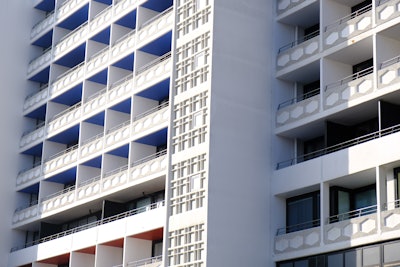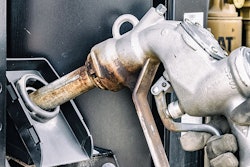
The critical issue in new housing continues to be the lack of sufficiently trained labor and a shortage of suitable materials. This was exacerbated by the hot housing market that ended in early 2022. Residential housing built over the past three years will suffer from quality issues that will lead to litigation if the builders aren’t willing to repair them. These initial construction problems will echo long after the building is complete.
Multi-family buildings are complicated to build. Many joints must be sealed, window openings must be adequately flashed, and waterproofing systems must be put together as the material manufacturer and architect specify. Understanding construction drawings and specifications is also necessary. It takes training, experience, and familiarity with these various tasks to do them right and prevent moisture from entering the building. Structural elements, like shear walls, must be installed correctly in all the right places to provide structural stability. Building products like foundation anchors, windows and caulking materials must be installed strictly according to a manufacturer’s specifications to be effective. This takes a lot of training and experience to do these tasks well. When the labor market is tight, especially as it has been the past two or three years, trained workmen and women are scarce, so substitutes are often recruited. Labor untrained in specific trades cannot be relied upon to perform tasks correctly, and there never is enough supervision to watch over every worker.
When the supply chain is interrupted, the usual building materials can be in short supply. When that happens, builders search for replacement products of different quality. They will substitute artificial stucco for the real thing, foam “plant-ons” for exterior trim details instead of wood or concrete, and cheaper grades of sheathing for plywood. These shortcuts and substitutions result in failures that show up as leaks and cracks in the short-term and rot, mold, deterioration, and other compromises to building safety over the long term.
Through the pandemic and beyond, low-interest rates and housing inventory gave rise to high demand for new housing, which encouraged builders to rush product to the market, sometimes without adequate quality control or sufficiently trained labor. These quality issues may take a few years to manifest themselves, but as they do, owners experience leaks, mold, rot, and other building issues that are expensive to repair. Because builders typically will not adequately repair these defects or do it in a substandard way, it leaves owners with little choice but to retain counsel to sue the builders for necessary repair funds.
Construction defect litigation can raise money for homeowners and let them repair their homes. But that remedy is only available for, at most, 10 years from building construction, depending on state law. After that, the owners are on their own. Dealing with undetected or unaddressed construction defects becomes much more difficult and expensive as buildings age. Long-term decay or other deterioration often exists in building locations that are not easily detected with routine inspections and can gradually compromise building safety.
The rot that destroyed the balcony structural supports of a multi-family building in Berkeley, Calif. in 2015 and killed six students was caused by moisture seeping into a joint where a balcony adjoined the building, and trapped vapor rotted the supporting beams. In the 2021 Champlain Towers collapse in Surfside, Fla., that killed 98 occupants, it appears that moisture seeped into concrete not adequately waterproofed and corroded the reinforcing steel. Casual inspections did not catch these problems or similar, but less catastrophic problems in many buildings. Even when severe damage has been identified, owners are reluctant to tax themselves for the cost of making proper repairs. Condominium buildings specifically have serious funding problems because their boards of directors are unwilling to impose unpopular assessments to pay for damage hidden, maybe for decades.
Condos are built like rental apartments except that the individual units are sold rather than rented or leased. This means that the ongoing maintenance cost falls on individual unit owners instead of investor groups or apartment building owners, who can pass the cost on to lessees. Individual condo owners have different needs and expectations, and it is difficult to reach a consensus on the amount to be spent on critical maintenance. Owners will push back on attempts by the board of directors to raise maintenance assessments so needed projects are short-changed, or deferred, sometimes for many years. If we leave the determination of how much to collect for ongoing maintenance to the vote of individual owners, that usually means that needed repairs are underfunded and hidden damage is not inspected and discovered.
Long-term damage from original construction defects can also depend a lot on location. The damage from a moisture-related defect is exacerbated in a high humidity environment, whether it is in the Northwest or more tropical areas like Hawaii. Water, or moisture, is the enemy of wood buildings and the reinforcing steel in concrete buildings where waterproofing is inadequate. In wet or high humidity areas, like the San Francisco Bay Area, Honolulu, or the Pacific Northwest, vulnerabilities in a structure, like mis-lapped building paper or inadequate window flashing, will result in rot and mold becoming apparent faster than in drier, less humid areas. Moist or rainy climates can also worsen drainage problems around buildings, and the frequency of rain will stress vulnerable building assemblies that are not adequately waterproofed.
The point is that construction defects can and should be discovered and addressed early in a building’s life when a claim is still available to raise funding for repairs. If they are detected later, as the building ages, the owners themselves must provide the funding, which can be challenging to raise. In either case, poor initial quality control, untrained labor, and materials in short supply during construction will plague buildings and their owners long after the hot housing market cools down.


















